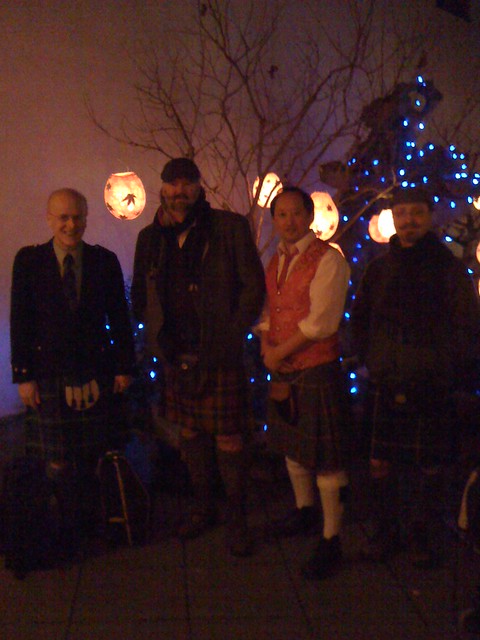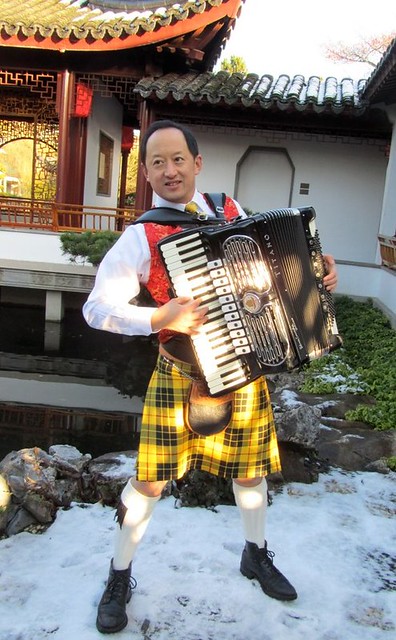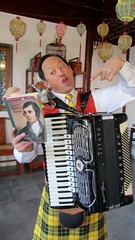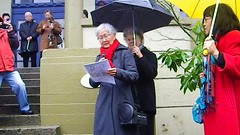+ Chinese-Canadian History
= Gung Haggis Fat Choy

It can be cold wearing kilts in winter, but here are Joe McDonald, Bruce Clark, Todd Wong and Xavier MacDonald at Dr. Sun Yat Sen Gardens for the Winter Solstice Lantern Festival. Joe, Xavier and myself with The Black Bear Rebels music ensemble helped to create a Winter Solstice Music Ceilidh on December 21st for the event.
Members of the Gung Haggis Fat Choy Pipes & Drums – included Dan Huang of the Kelowna Pipes & Drums
New
years are new beginnings, and every culture celebrates them differently
and similarly. That’s the great thing about being in a multicultural
nation such as Canada. All of the world’s cultures live inside our
borders and we can freely share and partake of each other’s cultures.
Yes, there are still racist bigots and idiots out there, and that is why
it is so important for us to embrace cultural harmony and help to build
a country we want to be proud of.
The origin of Gung Haggis Fat Choy
started when I was asked to participate in the 1993 Robbie Burns Day
celebration at Simon Fraser University. In 1998, I decided to
host a dinner for 16 guests that blended Robbie Burns Day(January 25th)
with Chinese lunar New Year (late January to early February). Now the
dinner event that has grown to an size of almost 500 guests, a CBC
television special, an annual poetry night
at the Vancouver Public Library, a recreation event at Simon Fraser
University…. and media stories around the world!
Hogmanay is the Scottish New Year’s Eve, and it is celebrated on New Year’s Eve with a Grand Dinner. It can be very similar to Chinese New Year’s in many ways:
1) Make lots of noise.
Chinese like to burn firecrackers, bang drums and pots to scare the
ghosts and bad spirits away. Scots will fire off cannons, sound
sirens, bang pots and make lots of noise, I think just for the excuse
of making noise.
2) Pay off your debts.
Chinese like to ensure that you start off the New Year with no debts
hanging onto your personal feng shui. I think the Scots do the
same but especially to ensure that they aren’t paying anymore interest.
3) Have lots of good food. Eat lots and be merry. Both Scots and Chinese enjoy eating, hosting their friends and visiting their friends.
4) Party on dude! In
Asia, Chinese New Year celebrations will go on for days, lasting up to
a week! Sort of like Boxing week sales in Canada. In
Scotland, the Scots are proud partyers and are well known for making
parties last for days on end.
Come to think about it… the above traditions can be found in many
cultures… I guess the Scots and Chinese are more alike than different
with lots of other cultures too!



 Photo by Deb Martin
Photo by Deb Martin Photo by Deb Martin
Photo by Deb Martin











